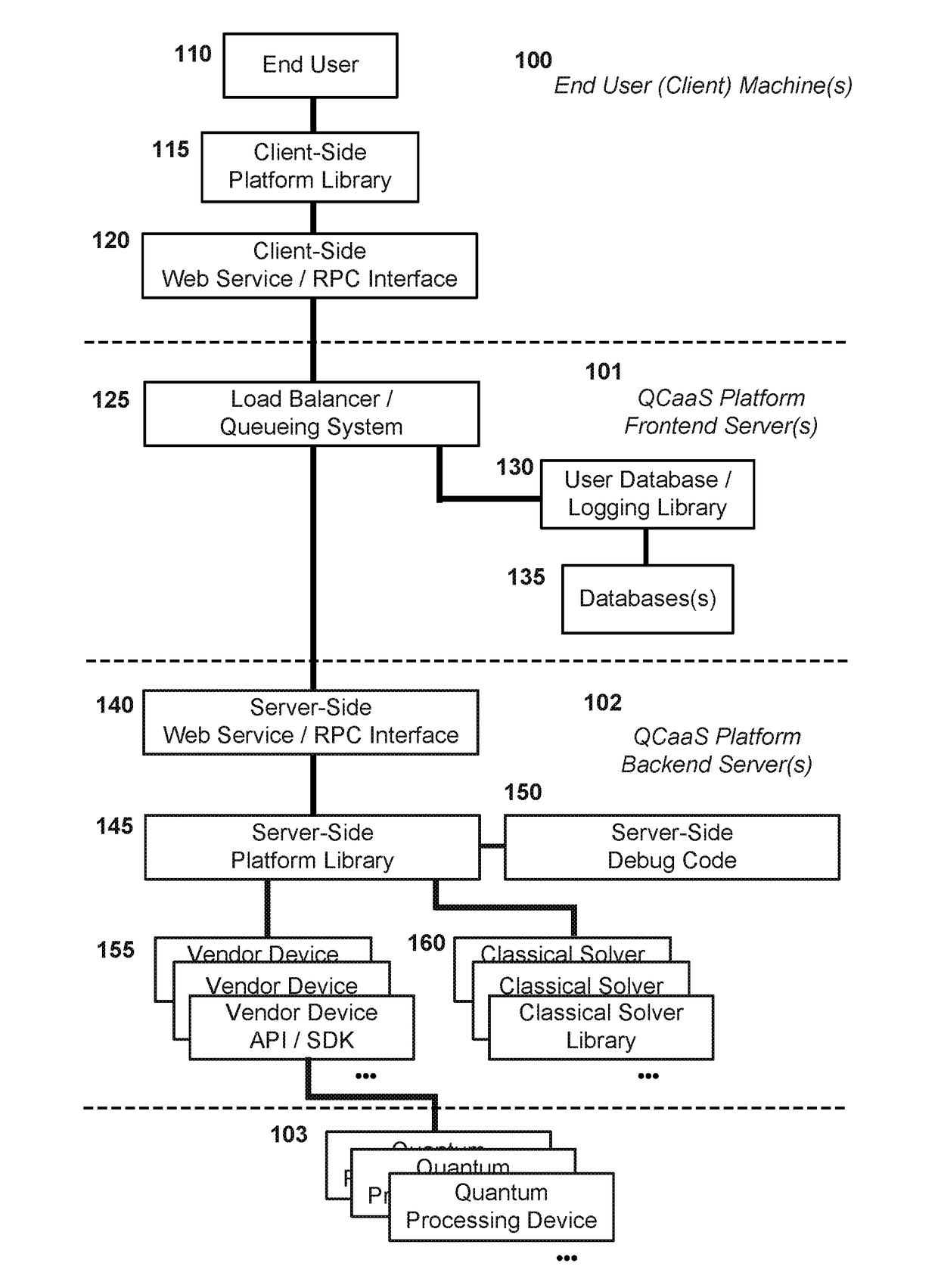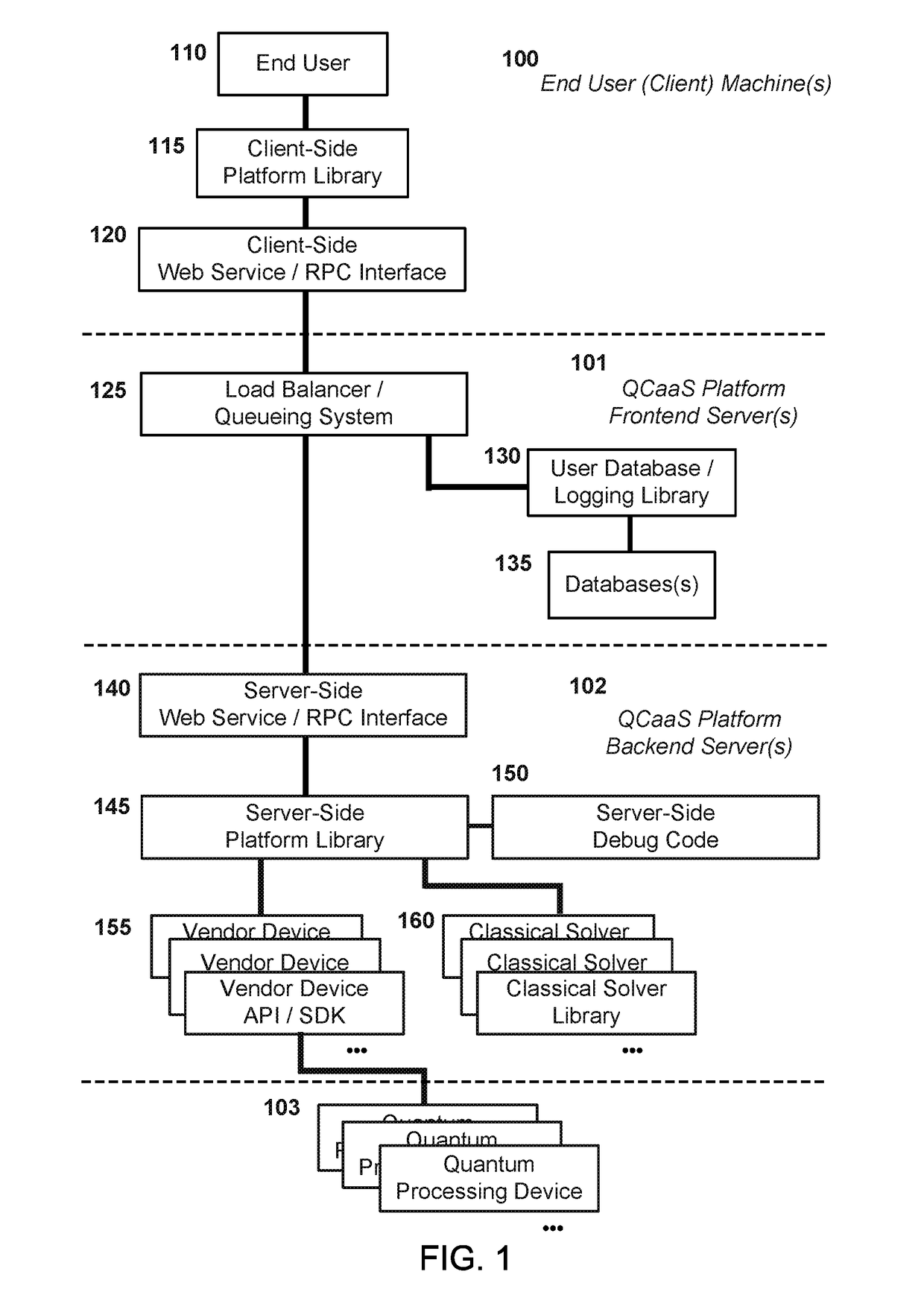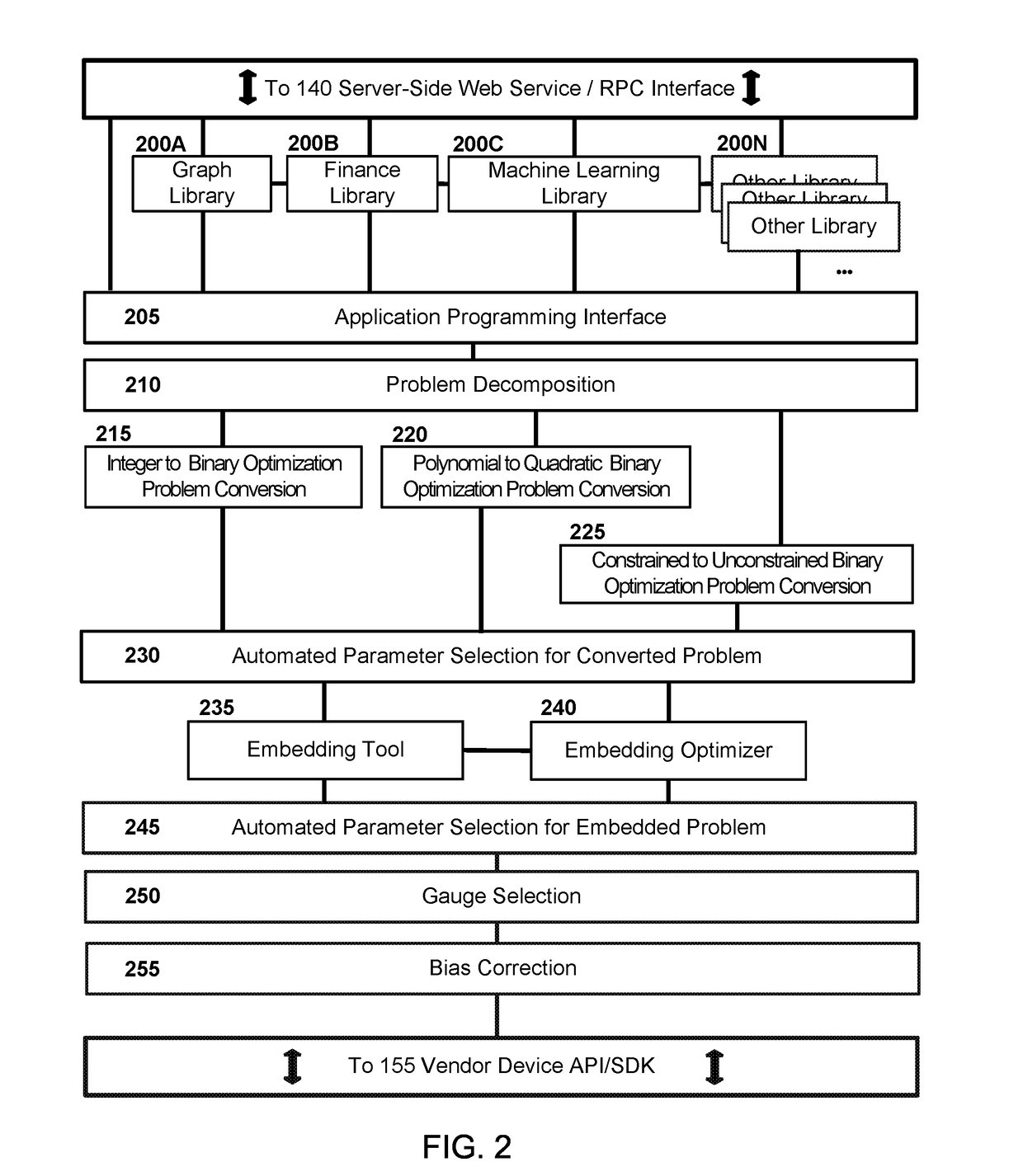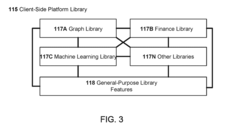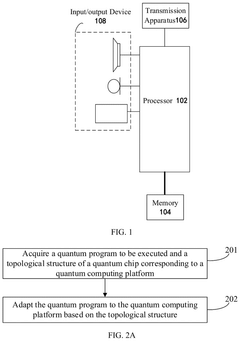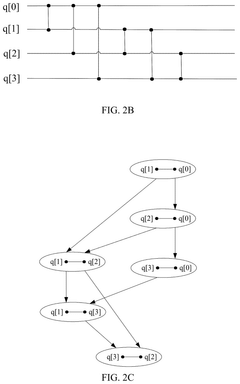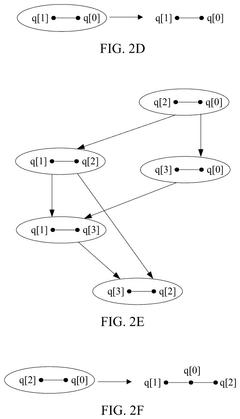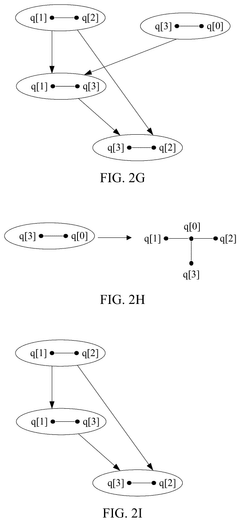Quantum Computing's Contribution to Revolutionizing Internet of Things Applications
JUL 17, 202510 MIN READ
Generate Your Research Report Instantly with AI Agent
Patsnap Eureka helps you evaluate technical feasibility & market potential.
Quantum IoT Evolution
The evolution of Quantum Internet of Things (QIoT) represents a paradigm shift in the landscape of interconnected devices and systems. This technological progression can be traced through several key stages, each marked by significant advancements and breakthroughs in both quantum computing and IoT technologies.
In the initial phase, classical IoT systems dominated the market, characterized by their ability to connect and exchange data between devices. However, these systems were limited by security vulnerabilities and computational constraints. The introduction of quantum principles to IoT marked the beginning of the QIoT era, with early experiments focusing on quantum key distribution for enhanced security in IoT networks.
As quantum technologies matured, the second stage of QIoT evolution saw the integration of quantum sensors into IoT devices. These quantum sensors, leveraging principles such as superposition and entanglement, offered unprecedented levels of precision and sensitivity in data collection. This advancement significantly enhanced the capabilities of IoT systems in areas such as environmental monitoring, healthcare diagnostics, and industrial process control.
The third stage witnessed the emergence of quantum-enhanced data processing in IoT networks. Quantum algorithms, running on early quantum computers, began to be applied to IoT data analysis, enabling more complex and efficient processing of the vast amounts of data generated by IoT devices. This development paved the way for more sophisticated predictive analytics and decision-making capabilities in IoT systems.
The fourth stage in QIoT evolution is characterized by the development of quantum communication networks for IoT. These networks utilize quantum entanglement to create ultra-secure, high-speed communication channels between IoT devices and data centers. This breakthrough addresses one of the most critical challenges in IoT: ensuring the integrity and confidentiality of data transmission in an increasingly interconnected world.
Currently, we are entering the fifth stage of QIoT evolution, which focuses on the creation of fully integrated quantum IoT ecosystems. This stage involves the seamless integration of quantum computing, quantum sensing, and quantum communication within IoT infrastructures. The result is a new generation of IoT systems capable of solving complex optimization problems, performing advanced simulations, and providing real-time insights with unprecedented accuracy and security.
Looking ahead, the future stages of QIoT evolution are expected to bring about even more transformative changes. These may include the development of quantum-powered edge computing for IoT, enabling real-time quantum processing at the device level, and the creation of large-scale quantum internet infrastructures that can support global QIoT networks. As quantum technologies continue to advance, we can anticipate further innovations that will redefine the capabilities and applications of IoT systems across various industries and domains.
In the initial phase, classical IoT systems dominated the market, characterized by their ability to connect and exchange data between devices. However, these systems were limited by security vulnerabilities and computational constraints. The introduction of quantum principles to IoT marked the beginning of the QIoT era, with early experiments focusing on quantum key distribution for enhanced security in IoT networks.
As quantum technologies matured, the second stage of QIoT evolution saw the integration of quantum sensors into IoT devices. These quantum sensors, leveraging principles such as superposition and entanglement, offered unprecedented levels of precision and sensitivity in data collection. This advancement significantly enhanced the capabilities of IoT systems in areas such as environmental monitoring, healthcare diagnostics, and industrial process control.
The third stage witnessed the emergence of quantum-enhanced data processing in IoT networks. Quantum algorithms, running on early quantum computers, began to be applied to IoT data analysis, enabling more complex and efficient processing of the vast amounts of data generated by IoT devices. This development paved the way for more sophisticated predictive analytics and decision-making capabilities in IoT systems.
The fourth stage in QIoT evolution is characterized by the development of quantum communication networks for IoT. These networks utilize quantum entanglement to create ultra-secure, high-speed communication channels between IoT devices and data centers. This breakthrough addresses one of the most critical challenges in IoT: ensuring the integrity and confidentiality of data transmission in an increasingly interconnected world.
Currently, we are entering the fifth stage of QIoT evolution, which focuses on the creation of fully integrated quantum IoT ecosystems. This stage involves the seamless integration of quantum computing, quantum sensing, and quantum communication within IoT infrastructures. The result is a new generation of IoT systems capable of solving complex optimization problems, performing advanced simulations, and providing real-time insights with unprecedented accuracy and security.
Looking ahead, the future stages of QIoT evolution are expected to bring about even more transformative changes. These may include the development of quantum-powered edge computing for IoT, enabling real-time quantum processing at the device level, and the creation of large-scale quantum internet infrastructures that can support global QIoT networks. As quantum technologies continue to advance, we can anticipate further innovations that will redefine the capabilities and applications of IoT systems across various industries and domains.
IoT Market Quantum Shift
The Internet of Things (IoT) market is undergoing a profound transformation, driven by the potential integration of quantum computing technologies. This quantum shift is poised to revolutionize the capabilities and applications of IoT devices, creating new opportunities and challenges for businesses and consumers alike. The convergence of quantum computing and IoT is expected to unlock unprecedented levels of data processing power, security, and connectivity.
As quantum computing advances, it promises to address many of the current limitations faced by IoT networks. Traditional computing struggles with the exponential growth of data generated by IoT devices, but quantum computers have the potential to process and analyze this vast amount of information at speeds unattainable by classical systems. This leap in computational power could enable real-time decision-making and predictive analytics on a scale previously thought impossible.
One of the most significant impacts of quantum computing on the IoT market is in the realm of cybersecurity. As IoT networks expand, they become increasingly vulnerable to cyber attacks. Quantum encryption techniques, such as quantum key distribution, offer the promise of unbreakable security protocols that could safeguard IoT communications and data storage. This enhanced security is crucial for sensitive applications in healthcare, finance, and critical infrastructure.
The integration of quantum sensors into IoT devices represents another transformative development. Quantum sensors can achieve levels of precision and sensitivity far beyond classical sensors, enabling new applications in environmental monitoring, medical diagnostics, and industrial process control. This heightened sensing capability could lead to more efficient resource management and improved early warning systems for natural disasters.
In the energy sector, quantum-enhanced IoT systems could optimize power grids, leading to more efficient energy distribution and consumption. Quantum algorithms could analyze complex energy usage patterns and predict demand with unprecedented accuracy, potentially reducing waste and lowering costs for both providers and consumers.
The automotive industry stands to benefit significantly from this quantum shift in IoT. Quantum-powered IoT systems could enhance autonomous vehicle capabilities, improving navigation, obstacle detection, and traffic management. The increased processing power could enable vehicles to make split-second decisions based on vast amounts of sensor data, potentially revolutionizing road safety.
As the IoT market embraces quantum technologies, we can expect to see the emergence of new business models and services. Companies that can harness the power of quantum-enhanced IoT will likely gain significant competitive advantages. This shift may also lead to the creation of entirely new industries focused on developing and maintaining quantum-IoT infrastructure.
However, the quantum shift in IoT also presents challenges. The transition will require substantial investments in research, development, and infrastructure. Additionally, there is a pressing need for skilled professionals who can bridge the gap between quantum physics and IoT engineering. Addressing these challenges will be crucial for realizing the full potential of this technological convergence.
As quantum computing advances, it promises to address many of the current limitations faced by IoT networks. Traditional computing struggles with the exponential growth of data generated by IoT devices, but quantum computers have the potential to process and analyze this vast amount of information at speeds unattainable by classical systems. This leap in computational power could enable real-time decision-making and predictive analytics on a scale previously thought impossible.
One of the most significant impacts of quantum computing on the IoT market is in the realm of cybersecurity. As IoT networks expand, they become increasingly vulnerable to cyber attacks. Quantum encryption techniques, such as quantum key distribution, offer the promise of unbreakable security protocols that could safeguard IoT communications and data storage. This enhanced security is crucial for sensitive applications in healthcare, finance, and critical infrastructure.
The integration of quantum sensors into IoT devices represents another transformative development. Quantum sensors can achieve levels of precision and sensitivity far beyond classical sensors, enabling new applications in environmental monitoring, medical diagnostics, and industrial process control. This heightened sensing capability could lead to more efficient resource management and improved early warning systems for natural disasters.
In the energy sector, quantum-enhanced IoT systems could optimize power grids, leading to more efficient energy distribution and consumption. Quantum algorithms could analyze complex energy usage patterns and predict demand with unprecedented accuracy, potentially reducing waste and lowering costs for both providers and consumers.
The automotive industry stands to benefit significantly from this quantum shift in IoT. Quantum-powered IoT systems could enhance autonomous vehicle capabilities, improving navigation, obstacle detection, and traffic management. The increased processing power could enable vehicles to make split-second decisions based on vast amounts of sensor data, potentially revolutionizing road safety.
As the IoT market embraces quantum technologies, we can expect to see the emergence of new business models and services. Companies that can harness the power of quantum-enhanced IoT will likely gain significant competitive advantages. This shift may also lead to the creation of entirely new industries focused on developing and maintaining quantum-IoT infrastructure.
However, the quantum shift in IoT also presents challenges. The transition will require substantial investments in research, development, and infrastructure. Additionally, there is a pressing need for skilled professionals who can bridge the gap between quantum physics and IoT engineering. Addressing these challenges will be crucial for realizing the full potential of this technological convergence.
Quantum-IoT Integration
The integration of quantum computing and the Internet of Things (IoT) represents a groundbreaking convergence of two transformative technologies. This fusion, often referred to as Quantum-IoT, promises to revolutionize the capabilities and applications of IoT systems across various sectors.
Quantum computing's unique properties, such as superposition and entanglement, offer unprecedented computational power that can significantly enhance IoT networks. One of the primary areas of integration is in data processing and analysis. IoT devices generate vast amounts of data, and quantum algorithms can process this information exponentially faster than classical computers, enabling real-time insights and decision-making.
In the realm of security, quantum-enhanced encryption methods can provide unbreakable protection for IoT communications. Quantum key distribution (QKD) ensures secure data transmission between IoT devices, addressing one of the most critical challenges in IoT adoption – cybersecurity. This quantum-secured IoT infrastructure is particularly crucial for sensitive applications in healthcare, finance, and critical infrastructure.
Quantum sensors represent another pivotal area of Quantum-IoT integration. These sensors, leveraging quantum effects, offer unprecedented levels of sensitivity and accuracy. In IoT applications, this translates to more precise environmental monitoring, improved medical diagnostics, and enhanced navigation systems. For instance, quantum magnetometers can detect minute changes in magnetic fields, enabling advanced geological surveys and non-invasive medical imaging.
The optimization capabilities of quantum computing also hold immense potential for IoT networks. Quantum algorithms can solve complex optimization problems, such as efficient routing in smart cities or optimizing energy distribution in smart grids. This capability is particularly valuable in large-scale IoT deployments where traditional computing methods struggle with the sheer number of variables and constraints.
Machine learning, a crucial component of many IoT applications, stands to benefit significantly from quantum computing. Quantum machine learning algorithms can process vast datasets more efficiently, leading to more accurate predictions and insights. This enhancement is particularly valuable in IoT scenarios involving pattern recognition, anomaly detection, and predictive maintenance.
However, the integration of quantum computing and IoT is not without challenges. The current state of quantum hardware, which often requires extreme cooling and is sensitive to environmental disturbances, poses limitations on direct integration with IoT devices. As such, much of the near-term Quantum-IoT integration is likely to occur through hybrid systems, where quantum processors work in tandem with classical IoT infrastructure.
As quantum technologies continue to mature, we can expect to see more direct integration at the device level. This could lead to the development of quantum-enabled IoT devices with dramatically enhanced capabilities, potentially redefining the boundaries of what's possible in fields like healthcare, environmental monitoring, and industrial automation.
Quantum computing's unique properties, such as superposition and entanglement, offer unprecedented computational power that can significantly enhance IoT networks. One of the primary areas of integration is in data processing and analysis. IoT devices generate vast amounts of data, and quantum algorithms can process this information exponentially faster than classical computers, enabling real-time insights and decision-making.
In the realm of security, quantum-enhanced encryption methods can provide unbreakable protection for IoT communications. Quantum key distribution (QKD) ensures secure data transmission between IoT devices, addressing one of the most critical challenges in IoT adoption – cybersecurity. This quantum-secured IoT infrastructure is particularly crucial for sensitive applications in healthcare, finance, and critical infrastructure.
Quantum sensors represent another pivotal area of Quantum-IoT integration. These sensors, leveraging quantum effects, offer unprecedented levels of sensitivity and accuracy. In IoT applications, this translates to more precise environmental monitoring, improved medical diagnostics, and enhanced navigation systems. For instance, quantum magnetometers can detect minute changes in magnetic fields, enabling advanced geological surveys and non-invasive medical imaging.
The optimization capabilities of quantum computing also hold immense potential for IoT networks. Quantum algorithms can solve complex optimization problems, such as efficient routing in smart cities or optimizing energy distribution in smart grids. This capability is particularly valuable in large-scale IoT deployments where traditional computing methods struggle with the sheer number of variables and constraints.
Machine learning, a crucial component of many IoT applications, stands to benefit significantly from quantum computing. Quantum machine learning algorithms can process vast datasets more efficiently, leading to more accurate predictions and insights. This enhancement is particularly valuable in IoT scenarios involving pattern recognition, anomaly detection, and predictive maintenance.
However, the integration of quantum computing and IoT is not without challenges. The current state of quantum hardware, which often requires extreme cooling and is sensitive to environmental disturbances, poses limitations on direct integration with IoT devices. As such, much of the near-term Quantum-IoT integration is likely to occur through hybrid systems, where quantum processors work in tandem with classical IoT infrastructure.
As quantum technologies continue to mature, we can expect to see more direct integration at the device level. This could lead to the development of quantum-enabled IoT devices with dramatically enhanced capabilities, potentially redefining the boundaries of what's possible in fields like healthcare, environmental monitoring, and industrial automation.
Quantum-Enhanced IoT
01 Quantum Circuit Design and Optimization
This area focuses on developing and optimizing quantum circuits for various applications. It involves creating efficient quantum gate sequences, reducing circuit depth, and improving overall performance of quantum algorithms. Techniques may include circuit compression, gate decomposition, and noise mitigation strategies.- Quantum computing architectures: Various quantum computing architectures are being developed to improve qubit stability, scalability, and error correction. These include superconducting circuits, trapped ions, topological qubits, and photonic systems. Each architecture has its own advantages and challenges in terms of coherence time, gate fidelity, and integration with classical computing systems.
- Quantum error correction and fault tolerance: Quantum error correction techniques are crucial for maintaining the integrity of quantum information in the presence of noise and decoherence. This includes the development of quantum error-correcting codes, fault-tolerant quantum gates, and surface code architectures. These methods aim to extend the coherence time of quantum systems and enable large-scale quantum computations.
- Quantum algorithms and applications: Researchers are developing quantum algorithms that can outperform classical algorithms for specific problems. These include algorithms for optimization, machine learning, cryptography, and simulation of quantum systems. The focus is on identifying quantum advantage in practical applications across various industries such as finance, chemistry, and materials science.
- Quantum-classical hybrid systems: Integration of quantum and classical computing systems is being explored to leverage the strengths of both paradigms. This includes the development of hybrid algorithms, quantum-inspired classical algorithms, and interfaces between quantum and classical hardware. Such hybrid approaches aim to enhance the practical utility of quantum computing in the near term.
- Quantum software and development tools: The creation of quantum software frameworks, programming languages, and development tools is essential for making quantum computing accessible to a wider range of researchers and developers. This includes quantum circuit compilers, simulators, and cloud-based quantum computing platforms that allow users to experiment with quantum algorithms and applications without direct access to quantum hardware.
02 Error Correction and Fault Tolerance
Error correction and fault tolerance are crucial for building reliable quantum computers. This includes developing quantum error correction codes, implementing fault-tolerant quantum gates, and designing architectures that can withstand noise and decoherence. Strategies may involve surface codes, topological quantum computing, and magic state distillation.Expand Specific Solutions03 Quantum-Classical Hybrid Algorithms
Hybrid algorithms combine quantum and classical computing to solve complex problems. This approach leverages the strengths of both paradigms, using quantum processors for specific subroutines while classical computers handle other parts of the computation. Examples include variational quantum eigensolvers and quantum approximate optimization algorithms.Expand Specific Solutions04 Quantum Hardware Implementation
This area covers the physical realization of quantum computing systems. It includes developing and improving qubit technologies such as superconducting circuits, trapped ions, and topological qubits. Research also focuses on scalable architectures, control systems, and cryogenic electronics for quantum processors.Expand Specific Solutions05 Quantum Software and Programming Languages
Quantum software development involves creating programming languages, compilers, and tools specifically designed for quantum computers. This includes high-level quantum programming languages, quantum circuit description languages, and software frameworks for quantum algorithm development and simulation.Expand Specific Solutions
Quantum-IoT Innovators
The quantum computing landscape for Internet of Things (IoT) applications is rapidly evolving, with the market in its early growth stage. Major players like IBM, Google, and Amazon are investing heavily in quantum technologies, while startups such as Zapata Computing and QC Ware are developing specialized quantum software solutions. The market size is projected to expand significantly in the coming years, driven by the potential of quantum computing to revolutionize IoT data processing and security. However, the technology is still in its nascent stages, with varying levels of maturity across different companies. Established tech giants are leading in hardware development, while smaller firms focus on software and specific use cases, indicating a diverse and competitive ecosystem.
International Business Machines Corp.
Technical Solution: IBM's quantum computing approach for IoT applications focuses on developing hybrid quantum-classical algorithms to enhance IoT data processing and decision-making. Their Qiskit Runtime platform allows for the seamless integration of quantum circuits with classical computing resources, enabling IoT devices to leverage quantum advantages in areas such as optimization and machine learning[1]. IBM has demonstrated a 127-qubit processor, showing potential for handling complex IoT network optimizations[2]. They are also exploring quantum-resistant cryptography to secure IoT communications in the post-quantum era, addressing the growing concern of quantum computers breaking current encryption methods used in IoT devices[3].
Strengths: Extensive quantum hardware and software ecosystem, strong research capabilities, and established partnerships in IoT sector. Weaknesses: Quantum computers still require extreme cooling, limiting direct integration with IoT devices.
Google LLC
Technical Solution: Google's approach to quantum computing for IoT applications centers on developing quantum algorithms for optimization and machine learning tasks critical to IoT networks. Their Sycamore quantum processor has demonstrated quantum supremacy, processing tasks in 200 seconds that would take classical supercomputers 10,000 years[4]. For IoT, Google is focusing on quantum machine learning algorithms that could significantly improve pattern recognition and anomaly detection in IoT sensor data[5]. They are also exploring quantum-enhanced optimization techniques for managing large-scale IoT networks, potentially revolutionizing resource allocation and energy efficiency in smart cities and industrial IoT deployments[6].
Strengths: Advanced quantum hardware, strong AI and machine learning capabilities, extensive cloud infrastructure for IoT integration. Weaknesses: Quantum technology still in early stages, challenges in scaling quantum systems for practical IoT applications.
Quantum-IoT Breakthroughs
Quantum Computing as a Service
PatentActiveUS20170223094A1
Innovation
- A quantum computing as a service (QCaaS) platform that provides cross-platform compatibility and reduces programmer burden by offering a service for development, testing, and execution of quantum software, utilizing a server-side and client-side platform library with domain-specific modules and algorithms to prepare and execute computational problems on quantum processing devices.
Quantum computing platform adaptation method and apparatus, and quantum computer operating system
PatentPendingUS20240338213A1
Innovation
- A method and apparatus for adapting quantum programs by constructing a directed acyclic graph of quantum logic gates, determining isomorphic subgraphs, and constructing a quantum circuit based on topological structures of quantum chips, allowing programs to run on different platforms by mapping subgraphs to physical qubits and calculating fixed and exchange costs for SWAP gates.
Quantum IoT Security
Quantum IoT security represents a critical frontier in the convergence of quantum computing and Internet of Things technologies. As IoT devices proliferate and quantum computing capabilities advance, traditional cryptographic methods face increasing vulnerability to quantum attacks. This necessitates the development of quantum-resistant security protocols to safeguard IoT ecosystems.
One of the primary concerns in quantum IoT security is the potential threat posed by Shor's algorithm, which can efficiently factor large numbers and solve discrete logarithm problems. This capability could compromise widely used public-key cryptography systems, such as RSA and ECC, which form the backbone of current IoT security measures. To address this challenge, researchers are exploring post-quantum cryptography (PQC) algorithms that can withstand attacks from both classical and quantum computers.
Lattice-based cryptography has emerged as a promising candidate for quantum-resistant encryption in IoT environments. These algorithms rely on the hardness of certain lattice problems, which are believed to be resistant to quantum attacks. Implementations of lattice-based cryptography for IoT devices are being developed, focusing on optimizing performance and minimizing resource requirements to accommodate the constraints of low-power IoT hardware.
Another significant area of research in quantum IoT security is quantum key distribution (QKD). QKD leverages the principles of quantum mechanics to enable secure key exchange between IoT devices. By utilizing the quantum properties of photons, such as superposition and entanglement, QKD systems can detect any eavesdropping attempts, ensuring the integrity of the key exchange process. Efforts are underway to miniaturize QKD systems for integration into IoT devices, although challenges related to cost and scalability remain.
The development of quantum sensors for IoT applications also introduces new security considerations. These sensors, capable of detecting minute changes in electromagnetic fields, gravity, or other physical phenomena with unprecedented precision, could potentially be used for enhanced intrusion detection and physical security in IoT networks. However, they also raise concerns about privacy and the need for robust data protection measures to prevent unauthorized access to the highly sensitive information they collect.
As quantum technologies mature, the concept of quantum internet is gaining traction, promising ultra-secure communication channels for IoT devices. Quantum repeaters and quantum memories are being developed to extend the range of quantum communication, potentially enabling global quantum-secured IoT networks. These advancements could revolutionize the security landscape of IoT, providing unparalleled protection against both classical and quantum threats.
One of the primary concerns in quantum IoT security is the potential threat posed by Shor's algorithm, which can efficiently factor large numbers and solve discrete logarithm problems. This capability could compromise widely used public-key cryptography systems, such as RSA and ECC, which form the backbone of current IoT security measures. To address this challenge, researchers are exploring post-quantum cryptography (PQC) algorithms that can withstand attacks from both classical and quantum computers.
Lattice-based cryptography has emerged as a promising candidate for quantum-resistant encryption in IoT environments. These algorithms rely on the hardness of certain lattice problems, which are believed to be resistant to quantum attacks. Implementations of lattice-based cryptography for IoT devices are being developed, focusing on optimizing performance and minimizing resource requirements to accommodate the constraints of low-power IoT hardware.
Another significant area of research in quantum IoT security is quantum key distribution (QKD). QKD leverages the principles of quantum mechanics to enable secure key exchange between IoT devices. By utilizing the quantum properties of photons, such as superposition and entanglement, QKD systems can detect any eavesdropping attempts, ensuring the integrity of the key exchange process. Efforts are underway to miniaturize QKD systems for integration into IoT devices, although challenges related to cost and scalability remain.
The development of quantum sensors for IoT applications also introduces new security considerations. These sensors, capable of detecting minute changes in electromagnetic fields, gravity, or other physical phenomena with unprecedented precision, could potentially be used for enhanced intrusion detection and physical security in IoT networks. However, they also raise concerns about privacy and the need for robust data protection measures to prevent unauthorized access to the highly sensitive information they collect.
As quantum technologies mature, the concept of quantum internet is gaining traction, promising ultra-secure communication channels for IoT devices. Quantum repeaters and quantum memories are being developed to extend the range of quantum communication, potentially enabling global quantum-secured IoT networks. These advancements could revolutionize the security landscape of IoT, providing unparalleled protection against both classical and quantum threats.
Quantum-IoT Standards
The development of quantum-IoT standards is crucial for ensuring interoperability, security, and efficiency in the integration of quantum computing and Internet of Things technologies. As quantum computing continues to advance, it is essential to establish a framework that allows seamless communication and data exchange between quantum systems and IoT devices.
One of the primary focuses of quantum-IoT standards is the development of quantum-resistant cryptography protocols. These protocols aim to protect IoT networks from potential threats posed by quantum computers, which have the capability to break many of the current encryption methods. Standardization efforts are underway to define quantum-safe algorithms and key exchange mechanisms that can be implemented across various IoT devices and platforms.
Another key aspect of quantum-IoT standards is the establishment of quantum communication protocols for IoT networks. These protocols leverage quantum properties such as entanglement and superposition to enable secure and efficient data transmission between IoT devices and quantum systems. Standardization in this area includes defining quantum key distribution methods, quantum error correction techniques, and quantum repeater protocols for long-distance communication.
Quantum sensing and metrology standards are also being developed to enhance the capabilities of IoT devices. These standards aim to leverage quantum effects to improve the accuracy and sensitivity of sensors used in IoT applications. This includes defining protocols for quantum-enhanced sensing techniques, such as quantum magnetometry and quantum imaging, which can significantly enhance the performance of IoT devices in various fields, including healthcare, environmental monitoring, and industrial automation.
Interoperability standards for quantum-IoT systems are crucial for ensuring seamless integration between quantum computers and IoT networks. These standards define common interfaces, data formats, and communication protocols that allow quantum systems to interact with IoT devices and traditional computing infrastructure. This includes standardizing quantum instruction sets, quantum memory management, and quantum-classical hybrid computing architectures.
Efforts are also underway to develop standards for quantum-enhanced machine learning and artificial intelligence in IoT applications. These standards aim to define protocols for leveraging quantum algorithms to improve the performance of AI and machine learning models running on IoT devices. This includes standardizing quantum feature maps, quantum neural network architectures, and quantum-classical hybrid learning algorithms.
As the field of quantum-IoT continues to evolve, ongoing collaboration between industry leaders, research institutions, and standardization bodies is essential to ensure the development of comprehensive and widely adopted standards. These standards will play a crucial role in unlocking the full potential of quantum computing in revolutionizing IoT applications across various sectors.
One of the primary focuses of quantum-IoT standards is the development of quantum-resistant cryptography protocols. These protocols aim to protect IoT networks from potential threats posed by quantum computers, which have the capability to break many of the current encryption methods. Standardization efforts are underway to define quantum-safe algorithms and key exchange mechanisms that can be implemented across various IoT devices and platforms.
Another key aspect of quantum-IoT standards is the establishment of quantum communication protocols for IoT networks. These protocols leverage quantum properties such as entanglement and superposition to enable secure and efficient data transmission between IoT devices and quantum systems. Standardization in this area includes defining quantum key distribution methods, quantum error correction techniques, and quantum repeater protocols for long-distance communication.
Quantum sensing and metrology standards are also being developed to enhance the capabilities of IoT devices. These standards aim to leverage quantum effects to improve the accuracy and sensitivity of sensors used in IoT applications. This includes defining protocols for quantum-enhanced sensing techniques, such as quantum magnetometry and quantum imaging, which can significantly enhance the performance of IoT devices in various fields, including healthcare, environmental monitoring, and industrial automation.
Interoperability standards for quantum-IoT systems are crucial for ensuring seamless integration between quantum computers and IoT networks. These standards define common interfaces, data formats, and communication protocols that allow quantum systems to interact with IoT devices and traditional computing infrastructure. This includes standardizing quantum instruction sets, quantum memory management, and quantum-classical hybrid computing architectures.
Efforts are also underway to develop standards for quantum-enhanced machine learning and artificial intelligence in IoT applications. These standards aim to define protocols for leveraging quantum algorithms to improve the performance of AI and machine learning models running on IoT devices. This includes standardizing quantum feature maps, quantum neural network architectures, and quantum-classical hybrid learning algorithms.
As the field of quantum-IoT continues to evolve, ongoing collaboration between industry leaders, research institutions, and standardization bodies is essential to ensure the development of comprehensive and widely adopted standards. These standards will play a crucial role in unlocking the full potential of quantum computing in revolutionizing IoT applications across various sectors.
Unlock deeper insights with Patsnap Eureka Quick Research — get a full tech report to explore trends and direct your research. Try now!
Generate Your Research Report Instantly with AI Agent
Supercharge your innovation with Patsnap Eureka AI Agent Platform!
